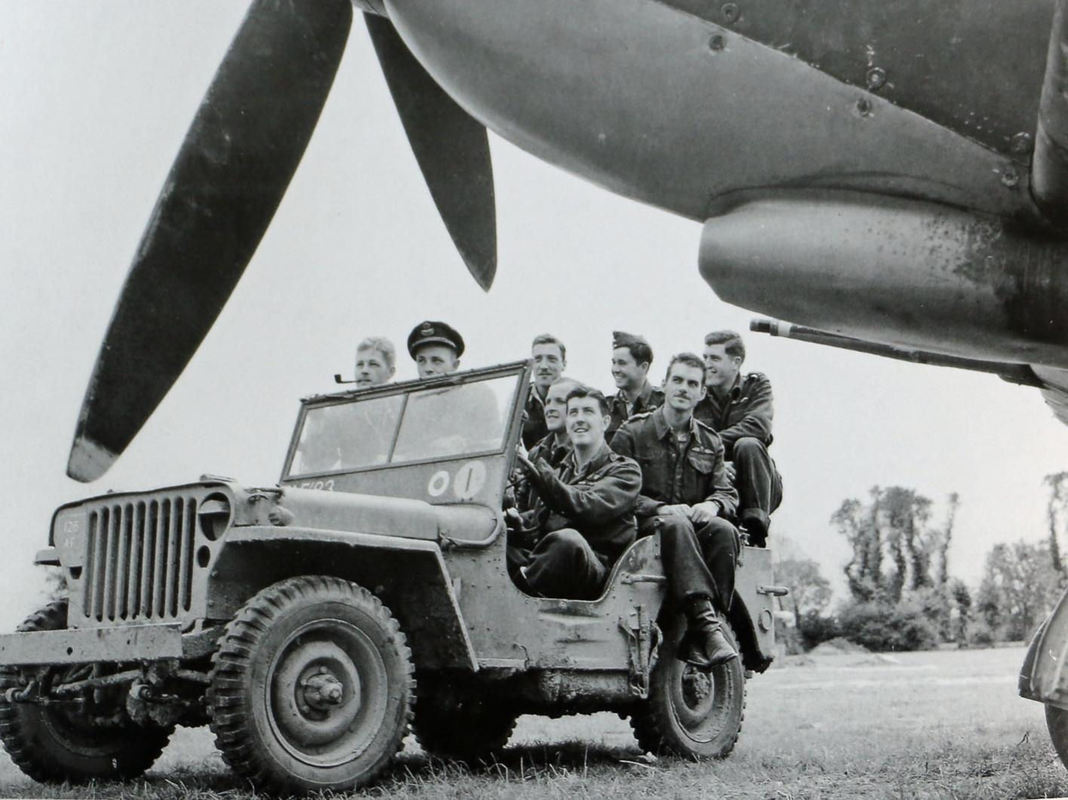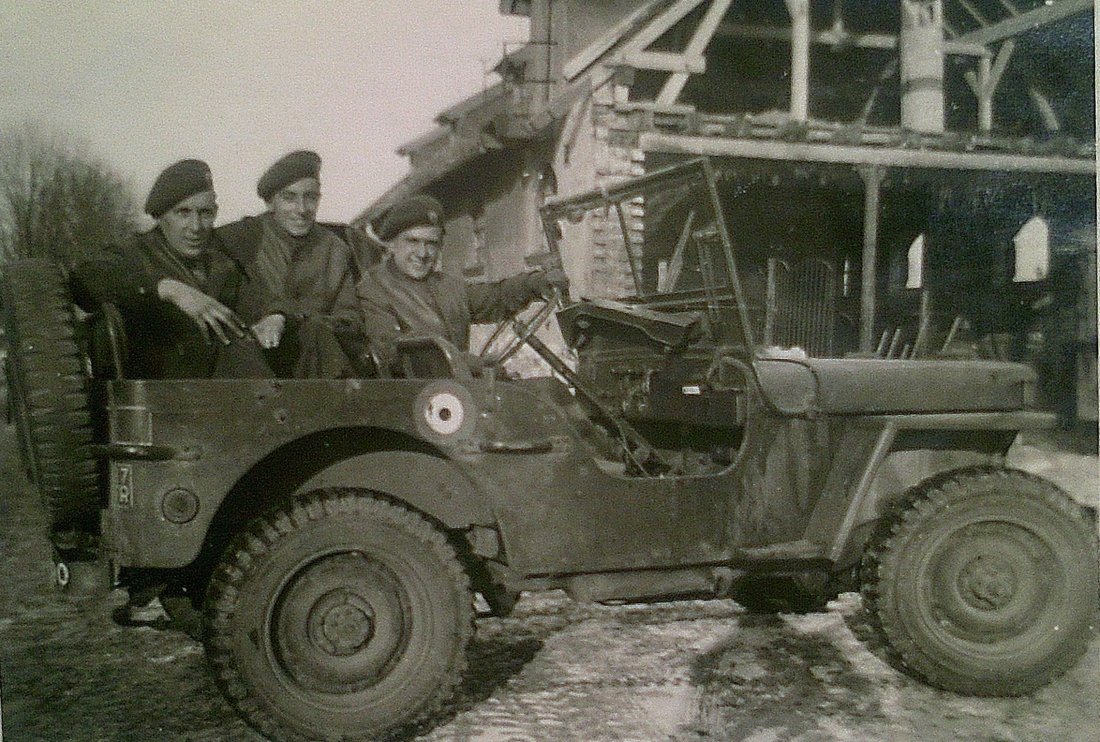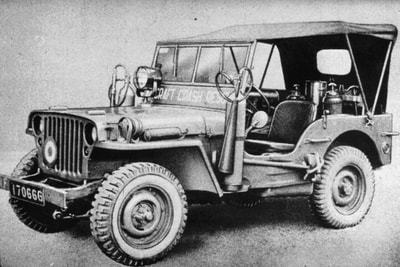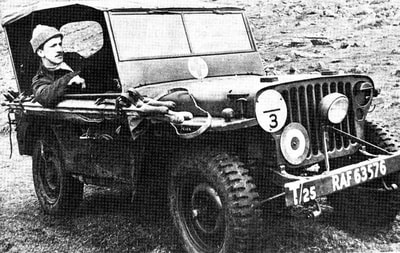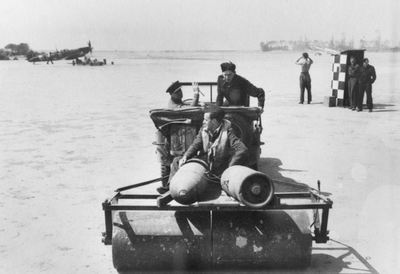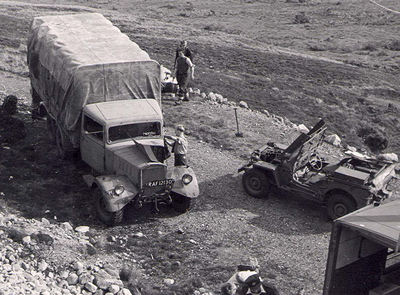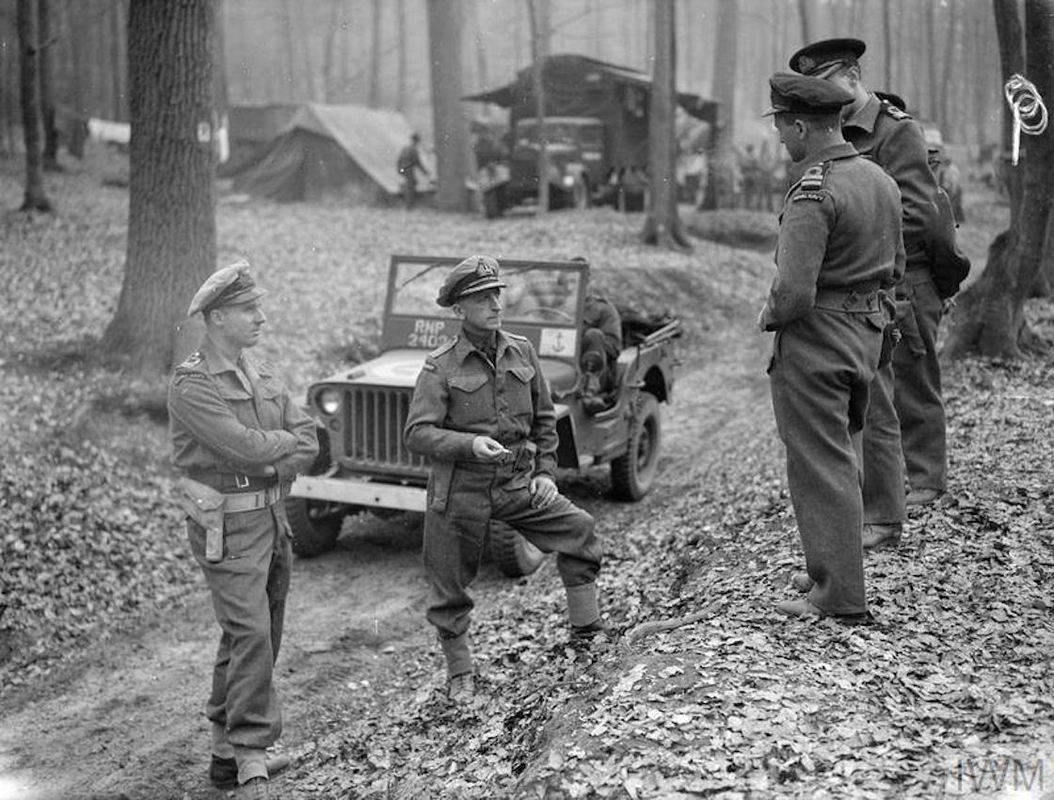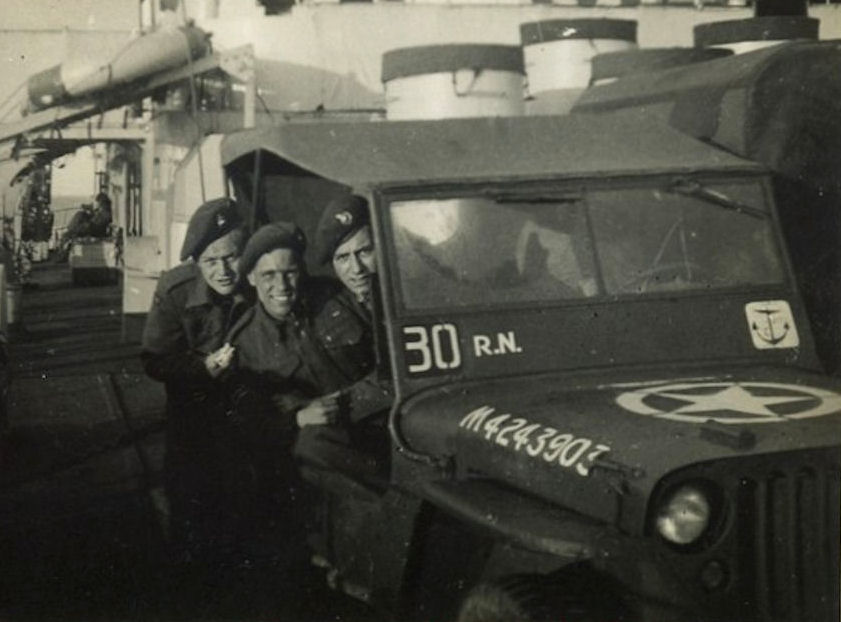ROYAL AIR FORCE JEEPS
|
When we say the jeep was used for every role you can imagine, we really meant it! The jeep was a universal utility vehicle. It was not intended to fulfill a single roll.
You might wonder what use the RAF would have for an all terrain vehicle? Well firstly they were bought in such large quantity that they were useful as car alone. But also, airfields and the ground around them often turned to muddy swamps, and the pilots and crews needed to get around the same as anyone. Also, once in a theatre of operation, the RAF needed to use the same roads as the army, or lack of. This meant they needed to be as mobile as the army, as such, used the same trucks and jeeps. Jeeps were frequently used by pilots to get out to their aircraft, but they had plenty of other uses. To the right is a RAF Regiment jeep in Detmold,Germany, 1945. The RAF Regiment operated as a land based defensive force for the RAF, more like an army unit, and were equipped as such. There is little to distinguish a RAF jeep from an Army one, as they were largely governed by the same regulations. They were painted according to army regs. The one exception is that they continued to use the RAF roundel as a recognition symbol long after the army had adopted the allied (or invasion) star. Here are some more uses for RAF jeeps. Crash rescue, the flattening of airfields, and Mountain rescue. Mountain rescue was increasingly a concern as the war went on, as many pilots and aircraft crew were going down in difficult to reach terrain. The jeep was well suited to accessed this terrain. |
ROYAL NAVY JEEPS
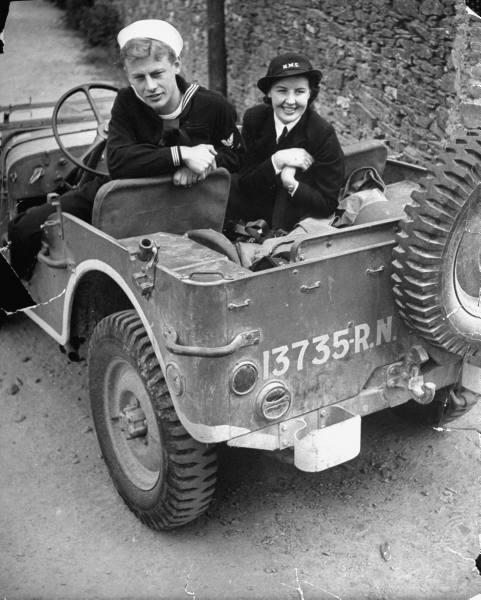
The Royal Navy certainly had less need for jeeps than the RAF, and yet they were still a useful utility. Many ships carried a jeep or two for landing parties to make use of. They were also used for a range of other duties, and especially as transport for high ranking officers.
LEFT - A rare early jeep serving with the Royal Navy, the Willys MA, at Londonderry in 1942.
Like Jeeps in RAF service, Royal Navy jeeps were bound by the same regulation as army vehicles. Aside from their RN registrations and Formation sign (anchor), they looked like army jeeps. They appeared to not have used the roundel at any time as aircraft recognition, but some vehicles did use the allied star late in the war, as below.
BELOW - A Royal Navy 'MOLCAB' - Mobile Landing Craft Advanced Base - is playing an important part in the Army's crossing of the Rhine. The British, American and Commonwealth invasion of Germany in 1945.
LEFT - A rare early jeep serving with the Royal Navy, the Willys MA, at Londonderry in 1942.
Like Jeeps in RAF service, Royal Navy jeeps were bound by the same regulation as army vehicles. Aside from their RN registrations and Formation sign (anchor), they looked like army jeeps. They appeared to not have used the roundel at any time as aircraft recognition, but some vehicles did use the allied star late in the war, as below.
BELOW - A Royal Navy 'MOLCAB' - Mobile Landing Craft Advanced Base - is playing an important part in the Army's crossing of the Rhine. The British, American and Commonwealth invasion of Germany in 1945.
|
Royal Navy Commando Royal Navy Commando's also used quite a number of jeeps. To the right is a jeep of Ian Fleming's famous 30AU unit. Though this jeep wears Royal Navy insignia, it is an army registered vehicle. This is the trend with all Commando jeeps that we have seen so far. They all carry M census numbers, and were therefore supplied from army stocks. Some Commando jeeps were equipped to Northern Europe SAS specification, with armoured screens and fixed weapon mountings. Others were rather more improvised. See the photo gallery for an extensive collection of photos. , |
